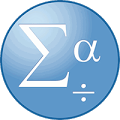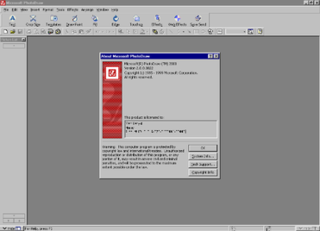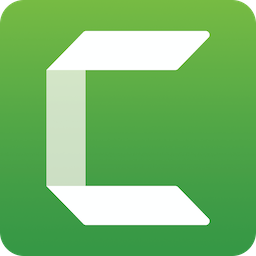
The Graphics Interchange Format is a bitmap image format that was developed by a team at the online services provider CompuServe led by American computer scientist Steve Wilhite on 15 June 1987. It has since come into widespread usage on the World Wide Web due to its wide support and portability between applications and operating systems.
Multiple-image Network Graphics (MNG) is a graphics file format, published in 2001, for animated images. Its specification is publicly documented and there are free software reference implementations available.

Portable Network Graphics is a raster-graphics file format that supports lossless data compression. PNG was developed as an improved, non-patented replacement for Graphics Interchange Format (GIF).

Allegro is a software library for video game development. The functionality of the library includes support for basic 2D graphics, image manipulation, text output, audio output, MIDI music, input and timers, as well as additional routines for fixed-point and floating-point matrix arithmetic, Unicode strings, file system access, file manipulation, data files, and 3D graphics. The library is written in the C programming language and designed to be used with C, C++, or Objective-C, with bindings available for Python, Lua, Scheme, D, Go, and other languages. Allegro comes with extensive documentation and many examples.

SPSS Statistics is a software package used for interactive, or batched, statistical analysis. Long produced by SPSS Inc., it was acquired by IBM in 2009. Current versions have the brand name: IBM SPSS Statistics.

Final Cut Pro is a series of non-linear video editing software programs first developed by Macromedia Inc. and later Apple Inc. The most recent version, Final Cut Pro 10.5.1, runs on Mac computers powered by macOS Catalina 10.15.6 or later. The software allows users to log and transfer video onto a hard drive, where it can be edited, processed, and output to a wide variety of formats. The fully rewritten Final Cut Pro X was introduced by Apple in 2011, with the last version of the legacy Final Cut Pro being version 7.0.3.
Oracle Forms is a software product for creating screens that interact with an Oracle database. It has an IDE including an object navigator, property sheet and code editor that uses PL/SQL. It was originally developed to run server-side in character mode terminal sessions. It was ported to other platforms, including Windows, to function in a client–server environment. Later versions were ported to Java where it runs in a Java EE container and can integrate with Java and web services.

Adobe Premiere Elements is a video editing software application published by Adobe Systems. It is a scaled-down version of Adobe Premiere Pro and is tailored to novice editors and consumers. The entry screen offers clip organization, editing and auto-movie generation options. Premiere Pro project files are not compatible with Premiere Elements projects files.

Microsoft PhotoDraw 2000 is a discontinued vector graphics and raster imaging software package developed by Microsoft.

LiVES is a free video editing software and VJ tool, released under the GNU General Public License version 3 or later. There are binary versions available for most popular Linux distributions. There are also ports for BSD, and it will run under Solaris and IRIX. It has been compiled under OS X Leopard, but not thoroughly tested on that platform. In early 2019, a version for Microsoft Windows was announced, with a release slated for in the second half of 2019.

Gwenview is an image viewer for Unix-like systems and is released as part of the KDE Applications bundle. The current maintainer is Aurélien Gâteau. The word "Gwen" means "white" in the Breton language and is commonly used as a first name.
Image file formats are standardized means of organizing and storing digital images. An image file format may store data in an uncompressed format, a compressed format, or a vector format. Image files are composed of digital data in one of these formats so that the data can be rasterized for use on a computer display or printer. Rasterization converts the image data into a grid of pixels. Each pixel has a number of bits to designate its color. Rasterizing an image file for a specific device takes into account the number of bits per pixel that the device is designed to handle.

Windows Photo Gallery is a discontinued image organizer, photo editor and photo sharing program. It is a part of Microsoft's Windows Essentials software suite. The product has been unavailable for download since January 10, 2017, as the Windows Essentials line of products have been discontinued.
A virtual telecine is a piece of video equipment that can play back data files in real time. The colorist-video operator controls the virtual telecine like a normal telecine, although without controls like focus and framing. The data files can be from a Spirit DataCine, motion picture film scanner, CGI animation computer, or an Acquisition professional video camera. The normal input data file standard is DPX. The output of data files are often used in digital intermediate post-production using a film recorder for film-out. The control room for the virtual telecine is called the color suite.
One of the principal features defining traditional cinema is a fixed and linear narrative structure. In Database Cinema however, the story develops by selecting scenes from a given collection like a computer game in which a player performs certain acts and thereby selects scenes and creating a narrative.
T_Visionarium is an art installation by Neil Brown, Dennis Del Favero, Jeffrey Shaw and Peter Weibel developed through the iCinema Centre for Interactive Cinema Research at The University of New South Wales in co-operation with ZKM Center for Art and Media, Karlsruhe.

Camtasia is a software suite, created and published by TechSmith, for creating video tutorials and presentations directly via screencast, or via a direct recording plug-in to Microsoft PowerPoint. Audio or other multimedia recordings may be recorded at the same time or added separately from another source.
Xena is open-source software for use in digital preservation. Xena is short for XML Electronic Normalising for Archives.

Final Cut Pro, previously Final Cut Pro X, is a professional non-linear video editing application published by Apple Inc. as part of their Pro Apps family of software programs. It was released on June 21, 2011 for sale in the Mac App Store. It is the successor to Final Cut Pro. It was renamed "Final Cut Pro" in November 2020, coinciding with the release of macOS Big Sur.

Microsoft Photos is Microsoft's modern image organizer, graphics editor, and video editor. It was first included in Windows 8 as a functional replacement for Windows Photo Viewer. Photos has Microsoft Sway integration and can use selected photos as a source for creating a Sway project. Users can also upload photos to OneDrive, Facebook, Twitter, Instagram and GroupMe for sharing.











